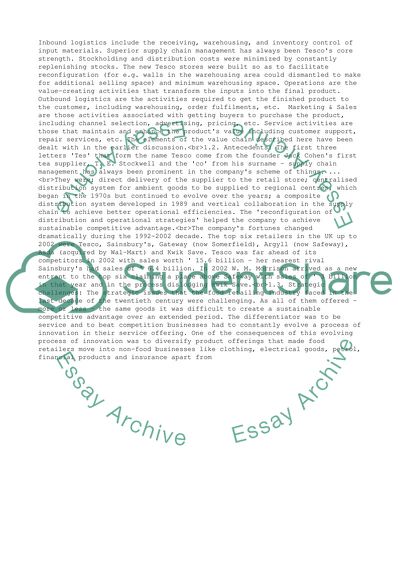Cite this document
(“Strategic management of Tesco Essay Example | Topics and Well Written Essays - 4750 words”, n.d.)
Strategic management of Tesco Essay Example | Topics and Well Written Essays - 4750 words. Retrieved from https://studentshare.org/business/1502073-strategic-management-of-tesco
Strategic management of Tesco Essay Example | Topics and Well Written Essays - 4750 words. Retrieved from https://studentshare.org/business/1502073-strategic-management-of-tesco
(Strategic Management of Tesco Essay Example | Topics and Well Written Essays - 4750 Words)
Strategic Management of Tesco Essay Example | Topics and Well Written Essays - 4750 Words. https://studentshare.org/business/1502073-strategic-management-of-tesco.
Strategic Management of Tesco Essay Example | Topics and Well Written Essays - 4750 Words. https://studentshare.org/business/1502073-strategic-management-of-tesco.
“Strategic Management of Tesco Essay Example | Topics and Well Written Essays - 4750 Words”, n.d. https://studentshare.org/business/1502073-strategic-management-of-tesco.


